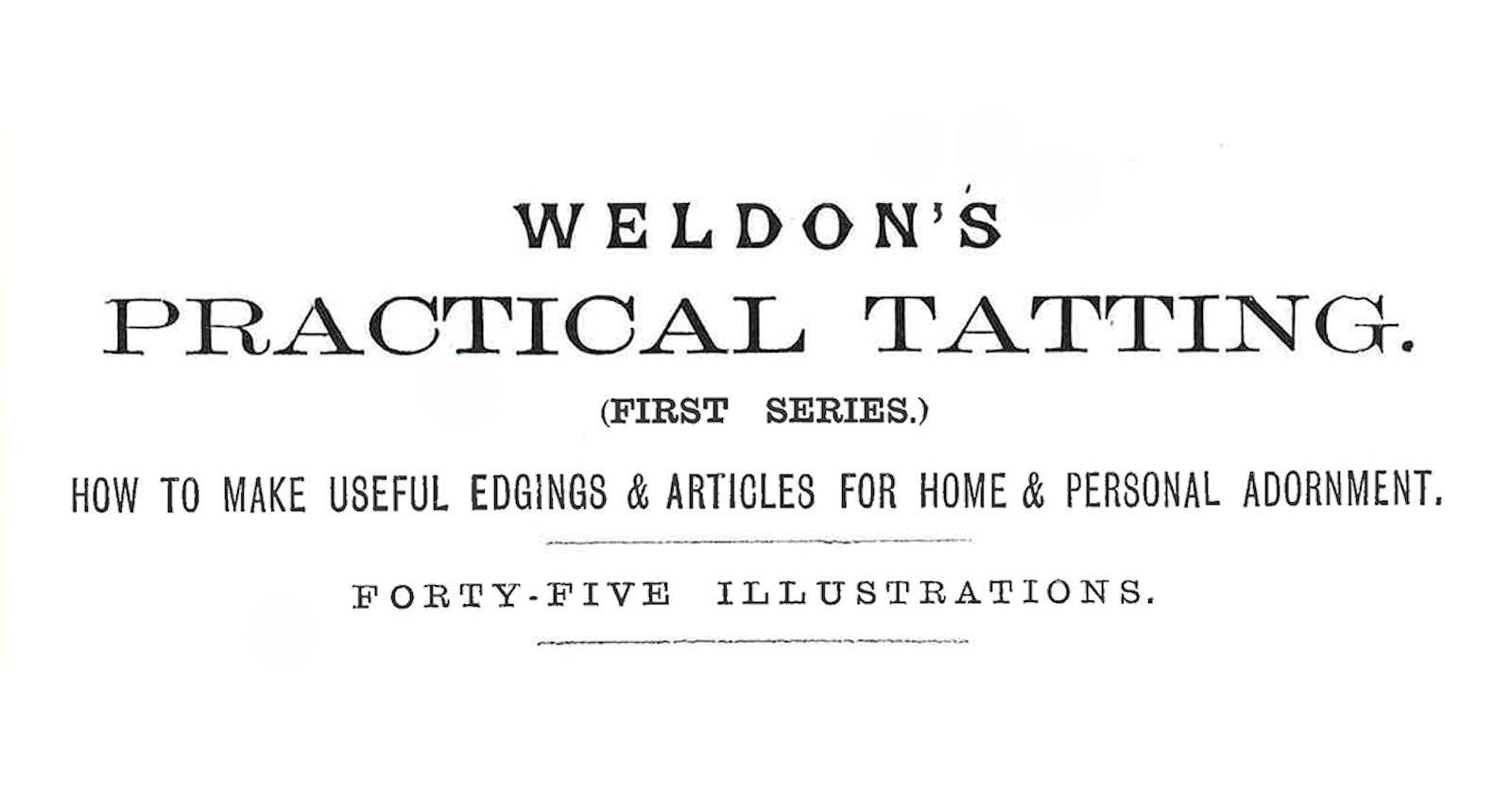Weldon’s Practical Needlework houses a wealth of information on Victorian tatting. Here’s our ninth installment in this series fromWeldon’s Practical Needlework, Volume 4. The following are instructions for tatting a “Simple Edging Worked with Two Threads.” The material is reproduced here just as it appeared in England in 1889. No alterations or corrections were made.
Illustrations from Weldon’s Practical Needlework, Volume 4.
Fig. 16.—SIMPLE EDGING WORKED WITH TWO THREADS
For the 1st oval—Make a loop with the shuttle thread, and work 5 double, 1 picot, 2 double, 1 picot and 1 double alternately four times, 1 picot, 2 double, 1 picot, 5 double, and draw up close; reverse the work, take the second thread, and placing it behind the oval between the thumb and first finger of the left hand, pass the thread in a loop round the fingers, twining it once or twice round the third finger to keep it secure, do 4 double, 1 picot, 4 double; * reverse the work, and for another oval make a loop with the shuttle thread, and do 5 double (beginning quite close to the last stitch upon the second thread), join to the last picot of the previous oval, 2 double, 1 picot and 1 double alternately four times, l picot, 2 double, 1 picot, 5 double, and draw up close; reverse the work, carry the second thread along behind the fingers bringing it round and form a loop by twisting the cotton once or twice round the third finger, do 4 double, 1 picot, 4 double; and repeat from *, continuing an oval and a straight bar alternately for the length required. This edging is very suitable for trimming under-linen; you work upon it a line of crochet to serve as a heading by which to sew the edging to the garment—1 double crochet in the picot in the centre of the straight bar, 6 or 7 chain, 1 double crochet in the next picot, and so on. In working elaborate patterns with two threads, if it is desirable for the tatting to have a right and a wrong side, you work the bars with the second thread in “reverse movements,” that is, work first the second movement, then the first movement, and the same in every stitch worked with the second thread, which brings the reverse side of the stitch upwards in working the bars, and when you turn the work you will see the picots in the bars look just the same as the picots in the ovals, whereas by working in the ordinary manner there is a trifling, though almost imperceptible difference.
If you missed any part of this series on Victorian tatting fromWeldon’s, you can catch up on all of the blog posts here. Find out more about tatting in our video download Shuttle Tatting with master tatter Georgia Seitz.
Featured Image: Weldon’s Practical Needlework, Volume 4, offers up a wealth of information on Victorian tatting.


